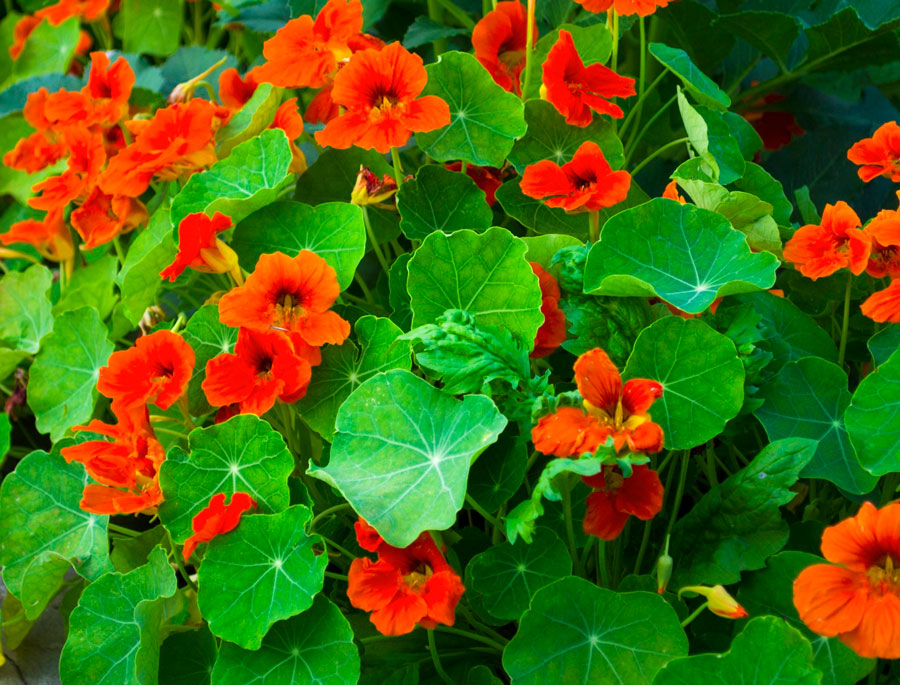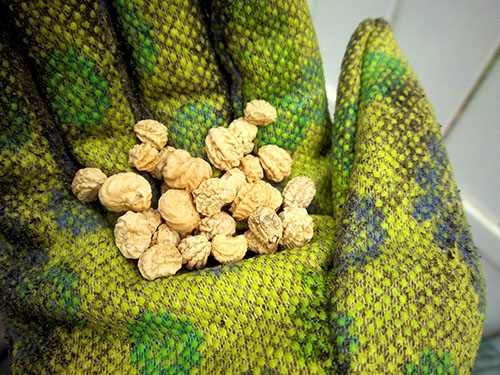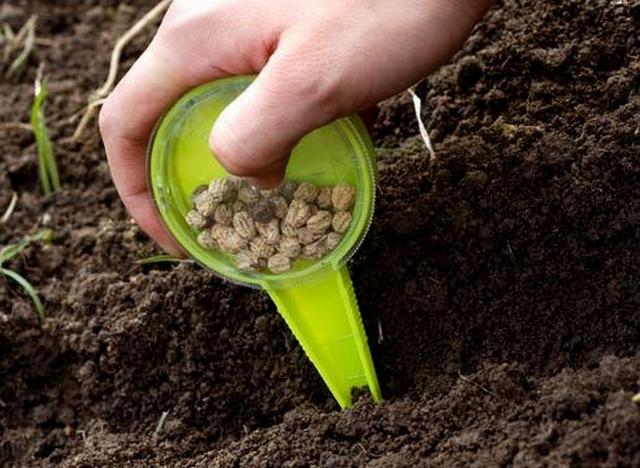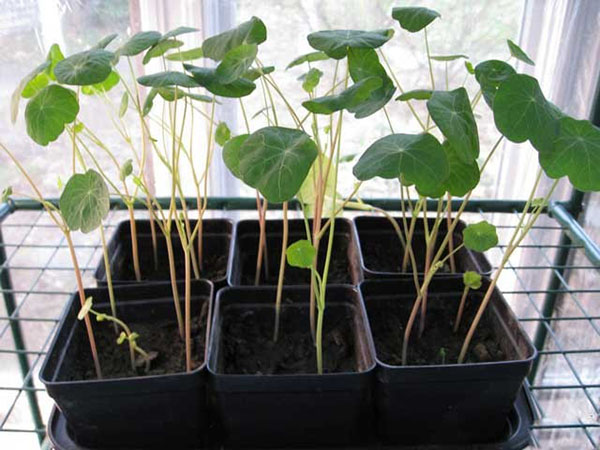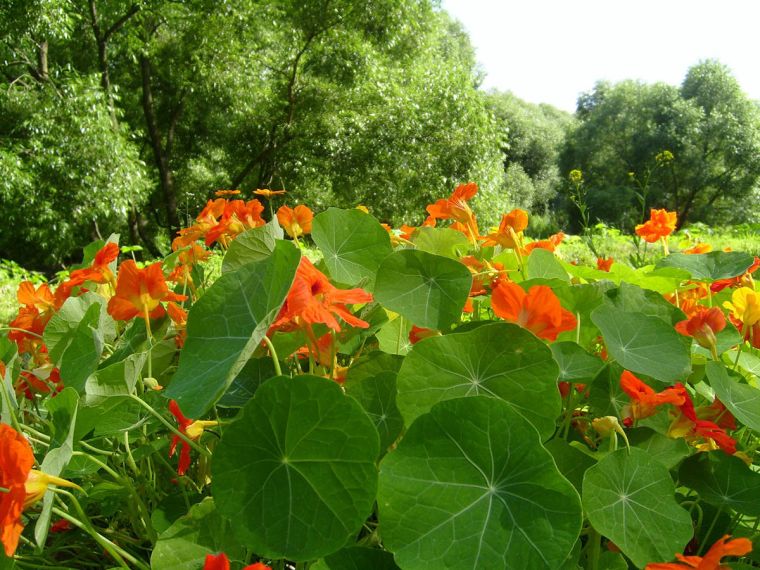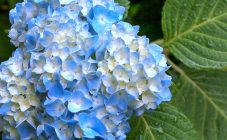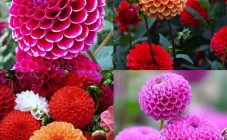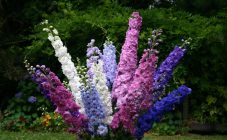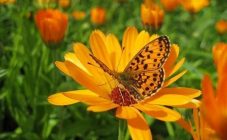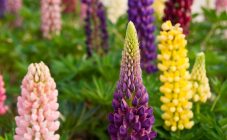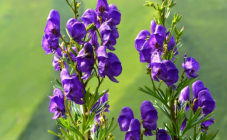Content:
Although nasturtium (capuchin) came to Russia from South and Central America, it feels good in central Russia. The plant is unpretentious to growing conditions; it looks very beautiful during flowering. Readers are interested in how nasturtium grows, planting and care in the open field, collecting seeds.
Outdoor cultivation
It is very easy to grow nasturtium from seed in open soil. By adhering to simple rules, you can achieve a lush flowering of this plant.
Nasturtium is an annual or perennial plant that looks like a vine with beautiful succulent shoots. Sometimes there are even shrubs. The structural features of nasturtium are suitable for growing them in open ground in central Russia.
To grow a plant in open ground, it is important to sow the plant correctly, water it and care for it during the period of intensive growth and flowering. To have a beautiful plant next year, you need to properly harvest the seeds.
When and how seeds are harvested
Ripening of nasturtium seeds occurs during the period of the initial wilting of flowers. Moreover, they have time to ripen before the first frosts in the fall. This applies to all its varieties, except for foreign nasturtium.
The main sign of seed ripening is a change in their color. From green, they gradually turn white. Then they begin to fall out of the peduncle. That is why it is not necessary to delay the harvesting of the "harvest" - its flowering for the next year depends on when to collect the seeds of nasturtium. Seeds can be prepared from the plants you like - this way you can fix some of the properties of the plant for the next year.
The seeds should be stored in boxes made of natural material. Unripe seeds are brought to maturity in boxes at room temperature. So they can be harvested for next summer.
When the plant finishes blooming and the seeds are harvested, you need to water the bushes. For the winter, the site is cleared of plant residues and dug up.
Planting nasturtium seeds
To grow a plant with a generative method, you should follow simple recommendations that help you achieve success in the cultivation of a garden plot.
Sowing seeds
Capuchin has fairly large seeds. It is advisable to sow them in the soil when the spring frosts have already ended (as a rule, this is the second half of May).
The depth of the hole during sowing is about 2 cm. The distance between them is 25-30 cm. The seeds must be sown using the nest method. One hole holds 3 or 4 seeds.
If the night temperature is still low, then the area with the sown seeds is covered with a thin film or other material. Crops should be sprayed with water at room temperature. Seedlings will appear in a week or two.
Deterioration of the seed growth process is observed when:
- low quality and low degree of seed germination;
- too cold soil;
- increased amount of moisture;
- placing seeds at great depth;
- increased soil density.
To eliminate problems with seed germination, they are placed in warm water for about a quarter of an hour before sowing. Then they need to be soaked for another day.
How to care for seedlings
Plant propagation also occurs in seedlings. Flowering then occurs much earlier than when sowing seeds in open ground.When using the seedling method, disposable peat cups are used. Seeds are sown around April or early May. In doing so, they are placed approximately 2 cm deep.
The seeded cups are placed in a cold place. The seedlings will start to grow in about 2 weeks. The sprouts should be provided with good lighting so they will not stretch.
Nasturtiums have a relatively weak root system. Therefore, the sprouts do not need to dive. The seedlings are placed in open soil in cups. This should be done in early June.
The seedlings are planted in the sun. This place should be protected from cold winds. If the capuchin is planted in the shade, then it will not bloom beautifully and effectively.
Care must be taken to ensure that the soil is very light and nutritious. If too much organic fertilizers are added to it, then the bushes will turn green very actively, but they will not bloom. If you grow plants on soil poor in fertilizers, then the leaves will be small, and the shoots will look naked. Flowers in this case will not have a decorative look.
Propagation by cuttings
Nasturtium can be propagated by cuttings. Plots in wet sand or soil take root quickly and after a few weeks are completely ready for transplanting into open soil. This way you can propagate the plant if you cannot get seeds of any exotic species.
Plant care
If nasturtium grows in the garden, caring for it is not difficult. It consists of regular watering and weeding. Proper planting and caring for nasturtium will ensure long-lasting flowering.
Watering
At the beginning of active growth of nasturtium, when the shoots are still weak, you need to be very careful about watering. Water must be abundant. When nasturtium blooms, watering is arranged only when the soil is noticeably dry. If it is constantly moistened, then instead of active flowering, leaves and shoots will grow.
It is interesting to know how much and how the nasturtium is cared for after flowering. Flowers that have begun to wilt need to be picked on time and regularly. To collect the seeds, you need to leave several ovaries.
Before the flowering of nasturtium begins, it is necessary to regularly feed with potash and phosphorus fertilizers. The plant does not like fertilizing with nitrogen fertilizers, which significantly deteriorates the quality of flowering.
Pest control
Despite the fact that nasturtium repels some pests, among which there are white-breasted, cabbage, Colorado beetles and aphids, she herself can get sick. It is often affected by wilting caused by bacterial activity. In a diseased plant, the lower leaves weaken significantly. Then the whole bush withers.
An equally common disease is gray rot. Because of it, brown spots form on the leaves. Sometimes they look like rust.
When pests appear, the affected parts of the plant must be removed. The remaining healthy parts should be sprayed with pest control solutions.
Top dressing
Readers are interested in how to feed nasturtium for abundant flowering. Excessive fertilizing damages the plant. Therefore, in order to have beautiful flowers, you should feed the plant only during the growing season. To do this, use fertilizers containing potassium and phosphorus salts, which bring maximum benefits. Mineral fertilizers should be applied no more than once a month.
Plant transplant
Readers are interested in whether flowering nasturtiums can be transplanted. When replanting a plant, you need to take into account the weakness of the root system.In order not to damage it, nasturtium is transplanted using the transshipment method. For this purpose, a whole rhizome is dug out together with the ground and so they are transferred to another place of growth.
At first, after such a transplant, the plant may wilt slightly. After watering, it is accepted. If it so happens that the flower did not survive the transplant, there is no need to despair - a new plant can be sown next year.
Plant support
Curly varieties of this plant must be attached to a support. It can be made from a trellis. If it is not there, then a support is made for the nasturtium with your own hands: it can curl on a fence or even a wall.
There are many ways to tie up nasturtium. A good solution is to use the branches left after cutting the shrub. To make an arched support, you can use branches that are inserted into the ground in an arc. If you twist the branches, you can build interesting blooming giant figures.
Winter landing
Readers are interested in whether it is possible to plant nasturtium before winter. Indeed, they can be sown later, but they will bloom only by August, the flowering period will be equal to several weeks.
Nasturtium is a beautiful flowering plant that does not require difficult maintenance. If you follow the advice from agronomists, you can achieve long flowering. If you collect seeds, next spring you can delight your eyes with a beautiful flowering.
